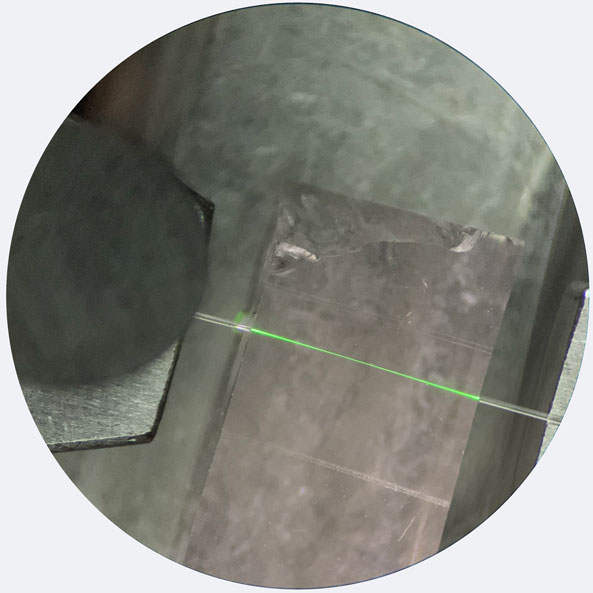A team of researchers with the participation of the Institute of Optics has published an article in which they describe the mutual blocking effect between particles of the same family during the process of creating waveguides by
laser-induced redistribution of elements .
The study of this phenomenon opens the possibility of inhibiting unwanted effects when using these redistribution processes.
Waveguides
The process of creating a waveguide implies that when the laser beam is focused under the surface of a glass, its components migrate modifying the local refractive index and thus a channel is formed with walls in which the difference in indices confines the light. inside as in an optical fiber.
What is laser-induced redistribution of elements?
Fs-laser induced element redistribution (FLIER) has been a subject of intensive research in recent years.
In this other article a related research from the same group has already been published.
Most of the research on FLIER-based waveguides refers to structures produced by the cross-migration of
alkalis (Na, K) and lanthanides (mainly La).
This redistribution of elements induced with femtosecond pulses is achieved in glasses composed of several components that are subjected to repetitions of a femtosecond laser that reaches the interior of the material. This phenomenon can be understood as a process of
thermodiffusion associated with the imbalance of chemical potential (the chemical components of a system spontaneously shift from high to low chemical potentials) that is formed in the volume of glass heated by the laser.
This redistribution increases when relatively heavy (eg lanthanides) and light (eg alkali) elements are present in the glass composition.
Despite this, the FLIER effects have apparently been overlooked in the past.
Our work
In the refractive index contrast structures produced by FLIER, the cross-movement of ions occurs in a hot, viscous glass matrix at high temperature. Therefore, the presence of cooperative or competing effects can be expected when different types of particles are present in the glass composition. However, there are no studies on the simultaneous use of several types of compounds in the production of waveguides by fs-laser writing through FLIER.
In this work, our objective has been to analyze the presence of these effects of cooperative or competitive ionic migration on FLIER in glasses prepared for this purpose, phosphate glasses modified with the same amount of Na
2O and K
2O, and different amounts of BaO and / or La
2O
3. These were used to produce FLIER-based waveguides.
The general behavior and performance of glasses modified with only Ba and only La was quite similar. However, the samples modified with Ba and La oxides together showed a strong increase in the migration threshold and a clear reduction in the size and index contrast of the structures.
These characteristics indicate that strong migration competition effects (particles block each other) occur when index carriers of different types are introduced into the glass composition. This competition effect can be exploited to inhibit unwanted cross-thermodiffusion effects in femtosecond laser writing applications on multicomponent glasses where preservation of glass composition is a requirement.
Link to the scientific article
This work is a collaboration of the Optics Institute, the Electronic Engineering department of the National Technological Institute of Mexico, the Ceramic and Glass Institute and the Materials Physics Department of the Physics Faculty of the Complutense University of Madrid.







